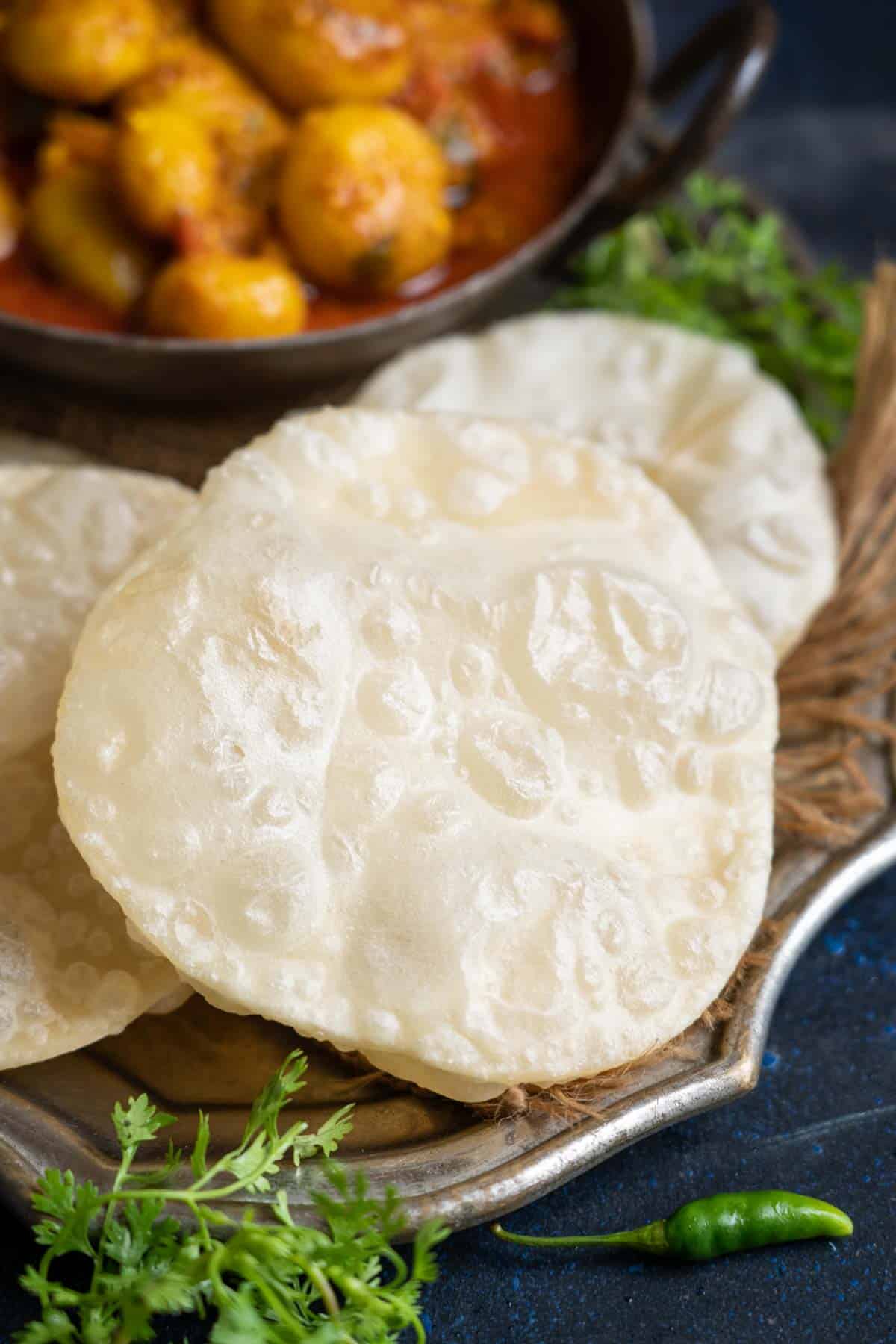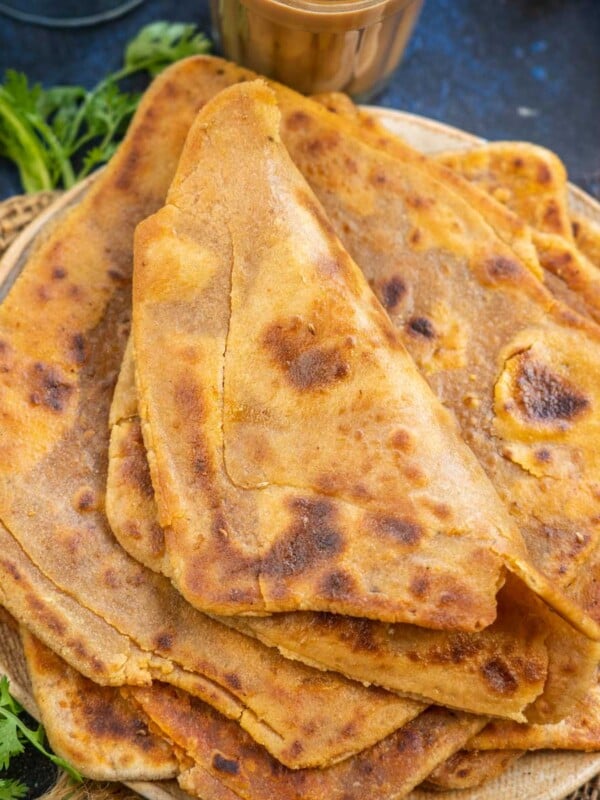on Feb 09, 2021, Updated Dec 22, 2023 Here are some more Bengali recipes that you may like: Aloo Posto, Chicken Rezala, Cholar Dal, Begun Bhaja, Jhal Muri, and Mishti Pulao. If you have read my Cholar Dal post, you would know about my first encounter with Bengali food. For those who have not, I was invited by a Bengali friend to their family lunch event and had my share of luchi, dal, and aloor dum. It’s hilarious, but at first sight of Luchi, I thought they had not fried the poori well. Honestly, I was a little skeptical about eating them when someone guessed my confusion from my facial expressions and told me about the differences between loochi and a poori. There was no looking back then! All I remember is overindulging and coming back home into a food coma.
About Luchi
Luchi is a deep-fried puffed white bread made of all-purpose flour popular in Bengali, Assamese, Maithili, and Oriya cuisine. It has a flaky interior and crunchy exterior. Luchi Bengali Aloo Dum or Luchi Kosha Mangsho are some of the classic combinations. They are made for festivals like Durga Puja and special occasions like Bengali weddings, birthdays, etc., in every Bengali household. Traditionally, the luchis were fried in ghee, giving them a peculiar taste. I sometimes fry them in ghee, but oil also works fine. Be it a festive time, or you want to prepare something special for the weekend, this puffed phyllo Loochi Puri recipe is worth a try! You can even make it for your get-togethers and house parties! The calories in this vegan bread are quite high compared to its size. A serving is approximately 400 calories. Hence, it is advised to eat this only on special occasions. Luchi is prepared with only all-purpose flour. Do not replace it with whole wheat flour (atta). You can deep fry them in ghee instead of oil. Use only warm water to ensure the consistency and texture of the dough are right.
2 and ½ cups of all-purpose flour (maida) 2 tablespoon oil ½ teaspoon salt
Mix all the ingredients using your fingertips until a crumbly mixture is made. Note – The consistency of the dough is critical to a perfect lunch, so keep that in mind. Do not add water all at once; otherwise, the dough can become sticky. Cover the dough with a damp kitchen towel and sit it on the counter for 20 minutes. Note – This resting time is important as it helps relax the gluten and prevents the luchi from springing back when you roll them. Divide the dough into small lime-size (1-inch) balls and press the balls between your palms slightly. Tip – Try to make the dough ball as round as possible. This will help you make round luchies. Make 3-4 loochi in the same manner. Keep the rest of the dough balls covered with the moist cloth; otherwise, the surface of the dough will dry out. When the oil is very hot, reduce the heat to medium. Note – The oil temperature is very important for the luchi to puff up. It should be very hot. Slip luchi in the hot oil and gently press it using a perforated or slotted spoon until it fluffs up. Do not over-fry. The color of the luchi is supposed to be white. If you fry it more, it will become brown. Flip gently and fry on the other side as well. Remove it to a plate lined with paper tissues. Fry the remaining rolled luchi and then simmer the heat to low. Now roll another batch of 4-5. Once rolled, increase the heat again and heat the oil nicely. Reduce the heat to medium and then fry the next batch. Keep rolling and frying the loochi in the same manner.
Aloo Kulcha
Roti (Phulka or Chapati)
Garlic Naan
Masala Paratha (Spicy Indian Flatbread)














